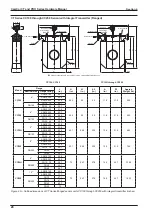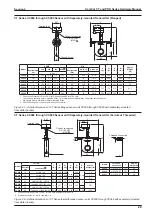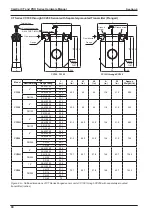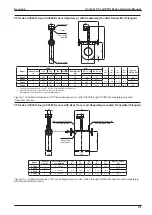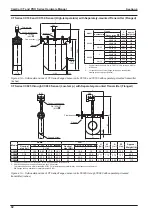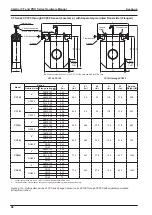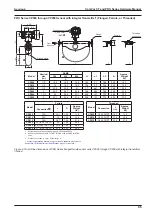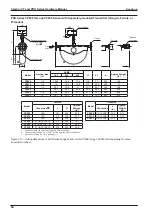
42
CamCor CT and PRO Series Hardware Manual
Section 5
Standard Piping Conditions
While the CT Series meter is referenced in the installation examples below, the same applies to PRO Series meters.
Valve
Flow
Valve
Figure 5.7—Standard piping conditions for CT Series and PRO Series meters
CAUTION
With the exception of CT models CC00A and CC001, which are typically bench- or wall-mounted, CamCor meters
are designed for flange mounting and should be supported by the pipeline. Piping supports should not be placed
under the sensor body but should be installed upstream and downstream of the meter.
Influence of Vibration and Pulsation
Generally, Coriolis mass flow meters can best perform in measurements with least pipeline vibration and pulsation. In ap
-
plications where vibration and pulsation are not negligible, the following considerations must be taken into account:
•
Locate the meter away from the sources of vibration and pulsation.
•
Provide attenuators, such as flexible tubes and chambers.
•
Close shutoff valves upstream and downstream of the meter at process flow shutdown to prevent erratic signal genera
-
tion at shutoff. Take precautions to prevent pressure inside the meter from exceeding the maximum allowable pressure
rating of the meter.
•
If meters of the same type are to be installed in a pipeline, allow adequate space between them (at least five times the
face-to-face dimension of the meter is recommended).
Prevention of Cavitation (Gas Flash Off)
Cavitation can cause a loss in Coriolis meter measurement accuracy. To prevent cavitation, maintain line pressure upstream
and downstream of the meter. Avoid piping arrangements that open the line to the atmosphere immediately downstream of
the meter. Particular care must be taken in low pressure applications and with high vapor pressure liquids, such as NGLs
(natural gas liquids).
It is recommended the back pressure immediately downstream of the meter be kept above the value calculated by the for
-
mula below:
Pd = 2ΔP + 1.25Pv
where Pd: Downstream pressure (PSIA)
∆P: Pressure drop across meter (PSID)
Pv: Vapor pressure of the process fluid (PSIA)
Calculation based on API Manual of Petroleum Measurement Standards, Chapter 5.6, Section 6.3.2.
Prevention of Excessive Flows
CAUTION
Exceeding the meter’s maximum flow rate will not significantly reduce the meter’s long term durability. Bear in
mind, however, that the output will be clamped at 110% of the allowable full-scale flow rate.
Prevention of Gas Mixed (Slug) Flows
Slug flows (gases exist in the process liquid) are generally not measurable at a high degree of accuracy. It also causes errat
-
ic pulse generation at shutdown of the flow.
This transmitter is capable of detecting gas mixed flows. On finding the result of densitometer measurement exceeding 0.3 to
2 g/mL (default), the meter interprets it as a slug flow and reduces the instant flow rate to zero, interrupting the flow output.
If it is desired to make a gas flow measurement, disable the gas mixed flow detection function (see
Summary of Contents for CamCor CC001
Page 14: ...14 CamCor CT and PRO Series Hardware Manual Section 3 This page is left blank intentionally ...
Page 24: ...24 CamCor CT and PRO Series Hardware Manual Section 3 This page is left blank intentionally ...
Page 54: ...54 CamCor CT and PRO Series Hardware Manual Section 5 This page is left blank intentionally ...
Page 62: ...62 CamCor CT and PRO Series Hardware Manual Section 7 This page is left blank intentionally ...

